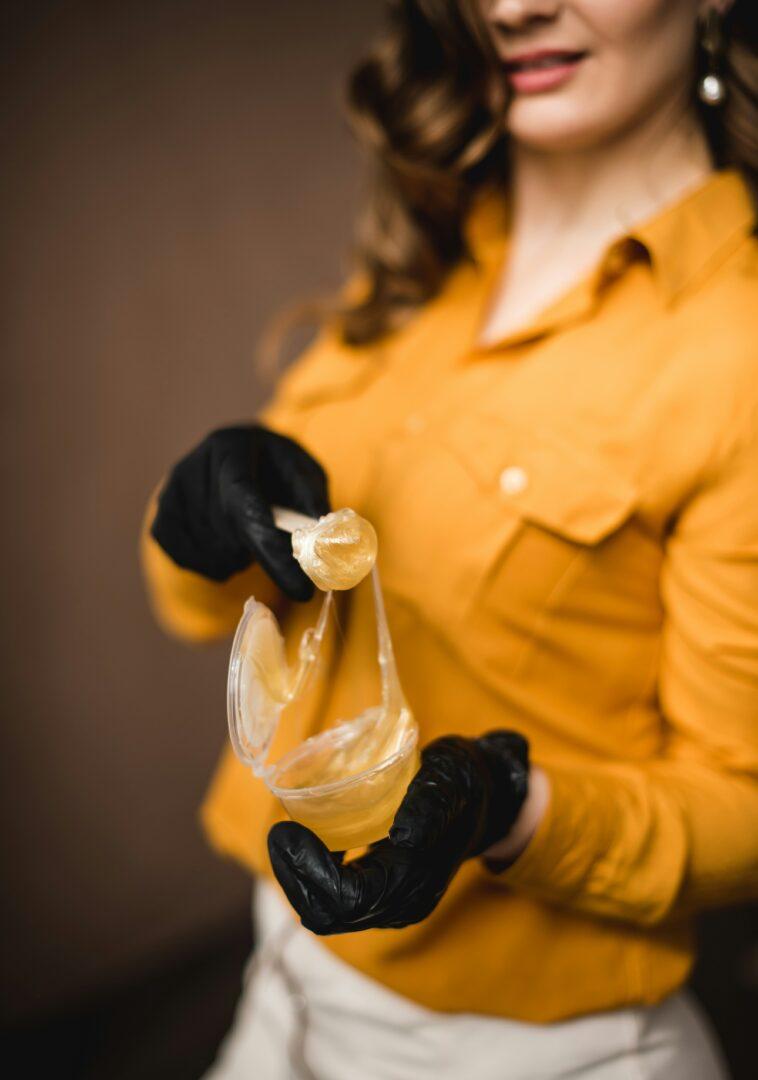When it comes to waxing, we’re often faced with the choice between hard wax and soft wax. Each has its unique qualities that might make one more suitable than the other depending on our needs. Hard wax is ideal for sensitive skin because it adheres to the hair rather than the skin, making it a gentler and less painful option. This makes it great for areas like the face and bikini line, where comfort is key.
On the other hand, soft wax is a powerhouse when it comes to efficiency and effectiveness. It’s perfect for tackling larger areas like our legs or back because it removes hair in one swift motion. Its ability to exfoliate while waxing leaves the skin feeling smooth and fresh, giving us that professional salon finish at home.
The choice between hard and soft wax ultimately depends on our personal preferences and the specific areas we’re targeting. By understanding differences and benefits, we can make an informed decision that aligns with our hair removal goals.
Understanding Waxing Fundamentals
When deciding between hard and soft wax, it’s essential to grasp their differences. We should know the specific techniques for applying each type of wax and how other products, like sugar wax, play a role.
Comparing Hard Wax and Soft Wax
Hard wax is known for being gentle on the skin. It hardens on the hair rather than sticking to the skin, making it ideal for sensitive areas like the face and bikini line. Soft wax, on the other hand, requires a cloth or paper strip to remove the wax from the skin. It’s great for large areas like the legs and arms because it covers more surface in less time.
When we look at moisture and exfoliation, soft wax can also help with exfoliating the skin, removing dead cells to leave the skin smooth. Wax strips often come with soft wax and are efficient for quick touch-ups.
Understanding these details ensures that we choose the right waxing method for our skin type and pain threshold.
Application Techniques for Waxing
For hard wax, it’s important to apply a thick layer since it needs to grip the hair without adhering to the skin. Allow it to cool slightly before peeling it away, keeping the process as painless as possible.
Soft wax requires a thin layer spread evenly over the skin, with a strip placed on top. We need to leave a small section of the strip free to hold onto when pulling the strip away. For sugar wax, which is a natural alternative, it’s applied against hair growth and removed in the direction of growth, offering a gentler experience.
Preparation is key. This includes ensuring the skin is clean, slightly moist, and well-exfoliated prior to waxing. This can help reduce irritation and improve the results.
Determining the Right Wax for Your Skin
When deciding between hard and soft wax, it’s key to consider your skin type and the area you wish to wax. Sensitive areas and delicate skin might benefit from the gentler application of hard wax, while soft wax serves well for larger, less sensitive zones.
Benefits of Hard Wax for Sensitive Areas
Hard wax is ideal for people with sensitive skin. It caters to areas prone to redness and irritation, such as the face or bikini line. Its unique formula, often containing natural ingredients like beeswax, adheres to hair without sticking to the skin.
This reduces discomfort during removal, making it a favorite for sensitive spots. Hard wax is also effective at removing fine hair, further minimizing skin stress and potential irritation.
When to Choose Soft Wax Over Hard Wax
Soft wax is best for larger areas like the legs or back. It’s applied in thinner layers, allowing us to cover more surface quickly and efficiently. While it may be slightly less gentle, it is still effective for less sensitive skin.
Thanks to its ease of application and affordability, soft wax is an excellent option for those newer to waxing or looking for a budget-friendly solution. Ensure accurate application to minimize discomfort and improve hair removal efficiency.
Practical Application: Areas and Hair Types
Choosing between hard wax and soft wax for hair removal involves understanding where on the body they work best and what type of hair they can handle. Hard wax is ideal for sensitive yet coarse areas, while soft wax handles larger, less sensitive areas with ease.
Best Practices for Different Body Areas
When it comes to the bikini line and underarms, hard wax is often preferred. Why? It adheres to the hair, not the skin, providing a comfortable removal experience. Hard wax is effective on sensitive skin because it minimizes irritation.
For larger areas like the legs, arms, or back, soft wax is the star. It’s applied in thin layers and removed with a strip, making it quick and efficient. The large application area allows us to cover ground swiftly, saving time without compromising on results.
Handling Coarse vs. Fine Hair
When tackling coarse hair, hard wax comes in handy. Its thick texture can grip the hair more firmly, pulling it out cleanly from the root. This makes it suitable for areas where hair tends to be thicker, like the bikini line or underarms.
Soft wax, on the other hand, is ideal for fine hair. It can remove lighter body hair on the arms and legs effectively. The wax’s lightweight nature makes it gentle yet efficient, ensuring that even the finest hairs aren’t left behind. This approach balances effectiveness with sensitivity across different hair types.
Managing Pain and Aftercare
Waxing, whether with hard or soft wax, can lead to discomfort and requires proper care afterward. Luckily, there are ways to make the process more comfortable and reduce potential irritation or redness.
For a smooth and comfortable waxing experience, it’s essential to have the right tools and techniques on hand. Brands like TressWellness.com offer a variety of waxing kits, tools, and aftercare products tailored to different skin types and needs, whether you’re using hard or soft wax. Investing in quality products can make a significant difference in reducing discomfort and achieving professional-quality results at home.
Techniques to Reduce Pain from Waxing
One effective method to manage pain is to take a pain reliever about 30 minutes before waxing. It can help in dulling the sensation. Applying a numbing cream to the area can also minimize discomfort.
Using a wax warmer ensures the wax is at the right temperature, which is crucial for reducing pain. The warmer the wax, the more it adheres to the hair and less to the skin.
Timing is also key. Waxing after a warm shower opens up pores, making hair removal easier. Stretching the skin slightly during application helps too.
Breathing techniques can be surprisingly effective. Taking deep breaths during the process can help us stay calm and manage pain better.
Essential Aftercare to Minimize Side Effects
Post-waxing care is important in preventing side effects like redness and irritation. We should start by cooling the waxed area with a cold compress. This eases discomfort and reduces swelling.
Applying aloe vera or witch hazel cools the skin and soothes irritation. Avoiding activities that make us sweat excessively, like intense workouts, prevents further irritation soon after waxing.
Exfoliation is helpful a couple of days after waxing. It’s important to be gentle to avoid causing more irritation. Sugaring can be an alternative if we experience much irritation, as it is gentler on the skin.
Wearing loose, breathable clothing helps keep the area comfortable, and avoiding sun exposure prevents additional stress on the skin.
Conclusion
Choosing between hard and soft wax depends on your skin type, pain tolerance, and the specific area you’re targeting. Hard wax is ideal for sensitive zones, while soft wax shines on larger areas. With the right techniques and quality products, you can enjoy smooth, salon-quality results right at home. Taking time to prepare, apply, and care for your skin post-wax ensures a comfortable and effective hair removal experience.







Comments